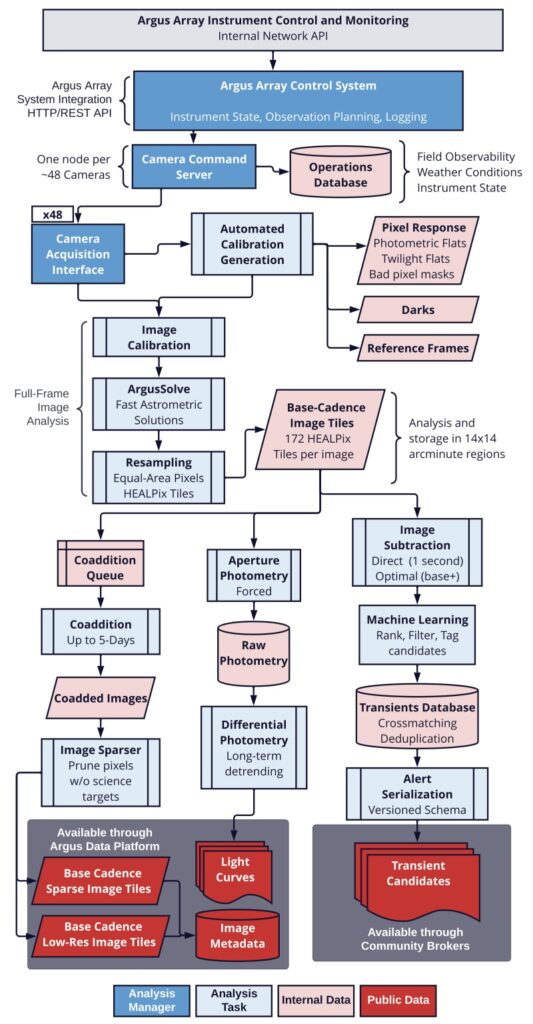Instrument Design
System Overview
The Argus Array is designed to simultaneously observe an all-sky (8,000 square degree) field of view, imaging each part of the sky for 2-10 hours per night, depending on declination. By combining 900 individual small-aperture (203 mm diameter) telescopes and 55 gigapixels modern, high-resolution CMOS sensors, the Array will be able to cover this entire field of view at arcsecond-resolution with an imaging cadence as fast as once per second.
The Argus Array will observe the locally accessible sky for 6-12 hours per night (see above figure), trading off relatively small apertures for very long coadded exposure times to achieve a simultaneously high-cadence and deep survey. Each 55 GPix Argus exposure covers 20% of the entire sky (8000 square degrees) with a sampling of 1.4 arcsec/pixel and a dark-sky limiting magnitude of mg = 19.5 in 30 seconds; coadding will produce depths down to mg = 22.7 each night. In high-speed mode the Array will reach 1s-level cadence over 47% of the entire sky (19,370 square degrees) each night. Over five years, the Array will build a two-color, million-epoch movie of the sky, enabling the most-sensitive-yet searches for high-speed transients, fast-radio-burst counterparts, gravitational-wave counterparts, exoplanet microlensing events, occultations by distant solar system bodies, and a host of other phenomena.
Argus Array Hardware and Software Design
 The Argus Array is optimized for for low-cost construction and operation, with a unique telescope array geometry that allows all the telescopes to look though a single fixed window. The Array enclosure is sealed from the elements, with air filtration to keep the optical surfaces clean and climate control to minimize refocusing of the telescopes, with its requisite wear-and-tear on precision moving parts, Waste heat from electrical components is piped away via a chilled water system to simplify thermally driven air currents and seeing effects within the enclosure.
The Argus Array is optimized for for low-cost construction and operation, with a unique telescope array geometry that allows all the telescopes to look though a single fixed window. The Array enclosure is sealed from the elements, with air filtration to keep the optical surfaces clean and climate control to minimize refocusing of the telescopes, with its requisite wear-and-tear on precision moving parts, Waste heat from electrical components is piped away via a chilled water system to simplify thermally driven air currents and seeing effects within the enclosure.
The Argus Array’s pipelines are based on the operational Evryscope data analysis pipeline (Corbett+2023), with custom-written GPU-based components enabling real-time analysis of images, even at 1s cadences.



